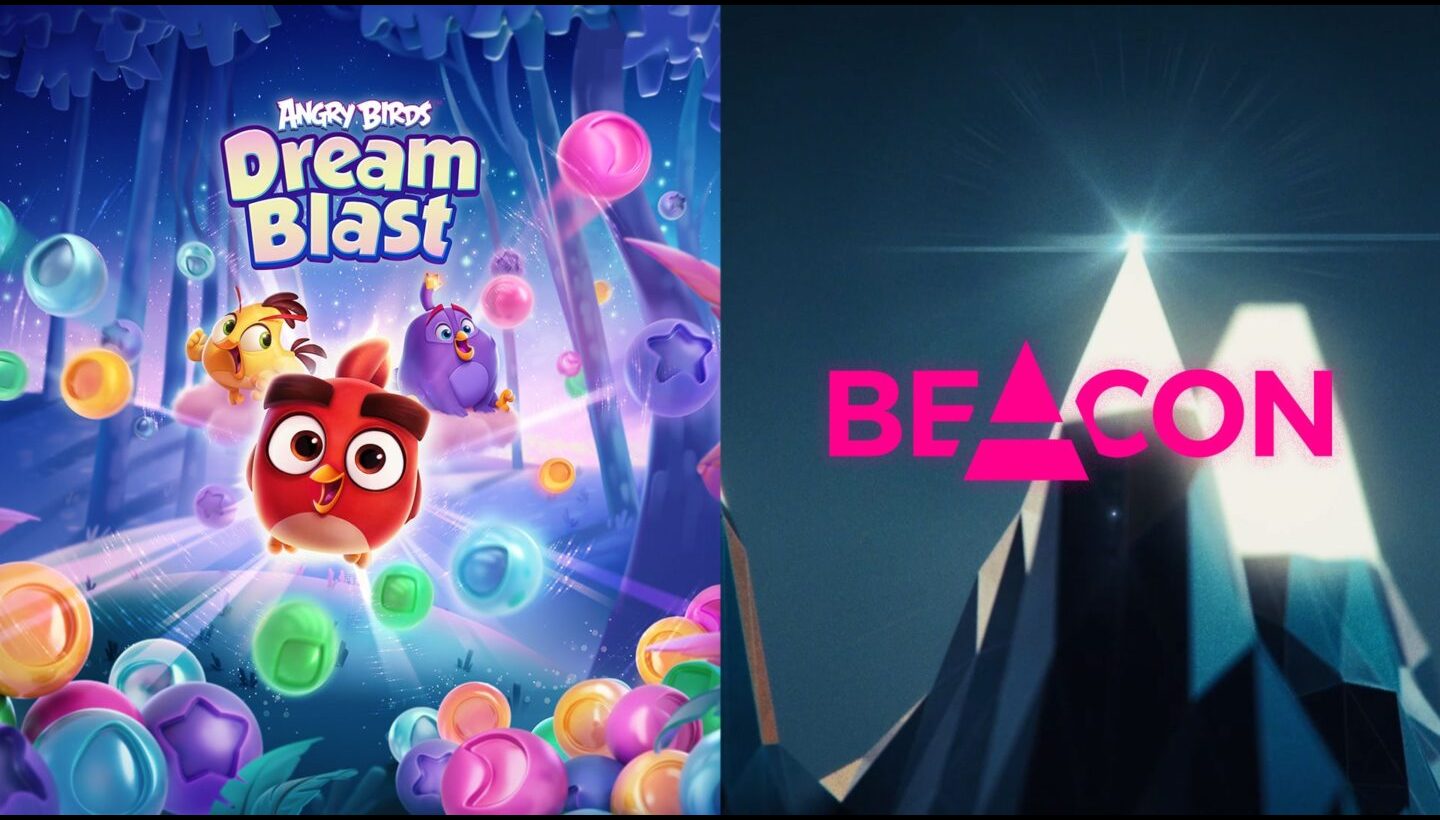

What can the ad players click on (and other data from UA) tell us about what kind of game they want to play? How can we deliver that game to them? Read on for the answers.
Written by:
Anastasia Kuprina, Lead Product Manager, Angry Birds Dream Blast
Niina Ojala, Principal Product Manager, Team Lead of Beacon Product Management
Rovio prides itself on crafting ‘player focused’ games, and this means that we are always striving to create games that resonate with players and that keep them playing for years. Being player-focused means that we use all information available to us to deliver game experiences players want. Previously, that has meant reacting to player behavior in the games themselves, but we are constantly searching for innovative ways to make better games. That search has led us outside of the game to the player’s very first interaction with the game. This moment, where the player says “ok, I’ll try this game” and clicks on an ad can provide crucial insight into what they are looking for in the game. Addressing the unique needs of different players leads to happier players overall and provides a boost to our business case as well.
It is important to consider that a player’s first interaction with a game can take place long before they ever play the game. If you consider the ‘rule of seven’, a player may be exposed to a game seven times before deciding to install. When they finally do install the game, the conditions that trigger that install can be significant, giving us insight into why they decided to play at that point. Depending on the type of ad creative they interact with to download the game, the player may have certain expectations once they download the game and start playing. Also, players seeing ads from different ad networks or players who are reacting to certain campaigns may similarly go into a game with different expectations than other players.
So how do we ensure that players’ unique expectations are met? What if we could use this early information from UA channels to tailor the player’s game to be a perfect fit just for them?
What can we personalize for players this early in the game?
Let’s imagine what that might look like. The information we can gather from users who click on our ads can fall into several categories, including ad network, the bid type, the ad campaign, ad set, and the actual creative used in the ad. Here is a brief explanation of each, and a bit about what it might tell us about the users, and how we can possibly adjust a game to cater to each user’s unique needs.
Ad network
The ad network a user is coming from can tell us where the person saw the ad. Was the person playing another mobile game when they saw the ad? Were they searching for a specific keyword? Did it appear in one of Rovio’s own games? Each of these scenarios can suggest something different. If they were playing another similar mobile game, perhaps they are familiar with this game genre. In this case, we could skip the tutorial for this user, or adjust the game difficulty to match their ability.
Campaign
Is the user coming from an ad for a specific event or an offer? If the player was interested in playing an event or taking part in an offer that was shown in the ad, perhaps they should be taken directly to the event, or they should see that offer as soon as they open the game for the first time.
Bid Type
Was the ad targeted to a smaller number of “valuable” users who are likely to be a good fit for the game, or was it part of a campaign that casts a wider net? The difficulty of the game can be optimized to onboard ROAS optimized players who are likely coming from playing similar games. ☺ Presenting a more challenging first time experience can help engage these users, who are already familiar with the basics of the game genre. On the other hand, when optimizing for CPI, the players that come into the game are less likely to make a purchase in the game.☞ In this case, offering special lower priced items, or even giving away items for free, can help these players get up to speed.
☺ ROAS (return on ads spend) Optimization – an approach in which ads are served to groups of people who are likely to be valuable players, who stay to play a game for longer, or are likely to make a purchase in the game. This approach may be more costly up front, but the players it attracts are more likely to make the investment worthwhile.
☞ CPI (cost per install) Optimization – focuses on the overall cost of advertising, and attempts to attract as many new players as possible, regardless of their likelihood to stick with a game and/or make a purchase. Essentially, attracting the greatest number of players to the game at the lowest cost.
Creative
What was shown in the ad itself? Depending on the contents of the ad itself, we can do a number of things. For example, if the user clicks on an ad that shows a certain mini-game or game mode, they can be taken directly to that feature when they start playing. If the ad is appealing to the users’ competitive side, they can start the game in a competitive game mode. If the ad presents a difficult challenge to overcome, the difficulty of the game can be increased to match the user’s expectations. We are also able to group ads into ad sets so we can track them based on different moods, motivations, or feelings.
See some examples of different creatives below. The first is appealing to players’ competitive side, while the second shows a specific minigame.
The Challenges
This all works seamlessly, provided that we have the right information, and that we can attribute the data to the correct player, and we can implement the necessary changes to the game instantaneously. However, doing this all while maintaining a high level of privacy for the users is actually quite difficult.
Challenge number one: One major problem we face is that once a player goes through an app store to download a game for the first time, they essentially lose sight of that player. That is to say, we can no longer attribute the correct data with the correct player in order to personalize their game.
Challenge number two: If we overcome the above challenge, and we have a user’s data and can reliably attribute it to an individual user, we then need to instantaneously configure the game to reflect their personalized experience.
The Solutions
Luckily, we have an in-house suite of tech/team of experts that has found a way to overcome these challenges.First, collecting and attributing user data can be handled by an MMP (mobile measurement partner), which is an external partner that manages data from ads operations to measure the effectiveness of campaigns and creatives. An MMP also anonymously attributes activity to specific users, effectively matching ad engagements with installs.
With Beacon, we are able to take the data and attribution from the MMP and combine it with personalization and live ops tools to deliver a personalized game experience instantaneously. Here is what the flow looks like:

First, the user clicks on an ad, which is tracked by an MMP which registers the user’s data explained above. Once the player launches the game for the first time, Beacon communicates with the MMP to recognize the player, and simultaneously applies personalization and campaign information based on the data collected in this first touchpoint to deliver an optimized game experience.
In pursuit of crafting perfectly tailored game experiences for every player, Rovio has found a technological solution with Beacon that delivers experiences with great potential to engage players and keep them returning to the game. Beacon makes it possible for many aspects of the game to be personalized from the first time the player opens the game, all while maintaining user privacy. Ultimately, this gives marketing managers and game teams greater flexibility, and more opportunities to think creatively regarding the kinds of game experiences that they can deliver.



